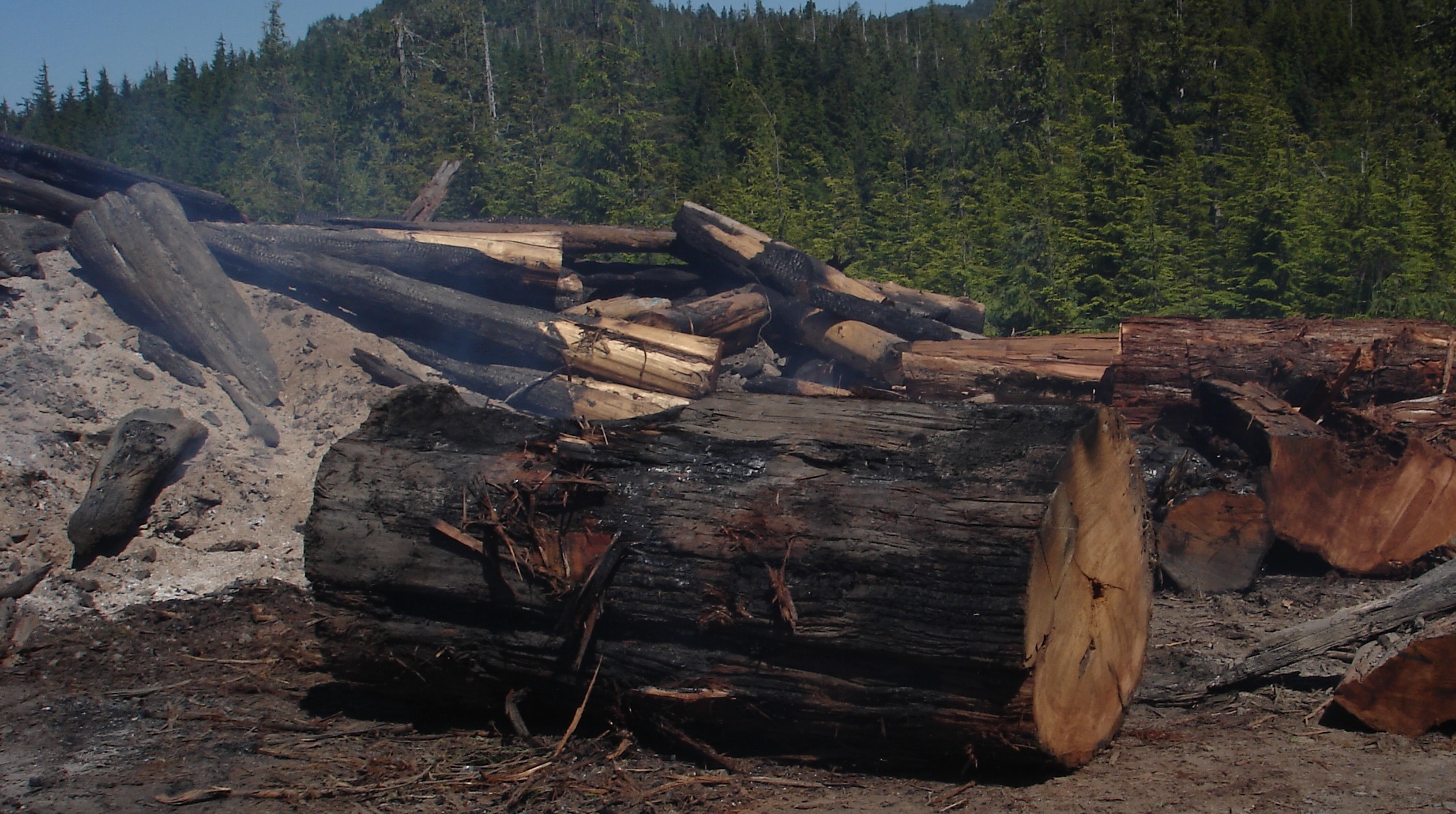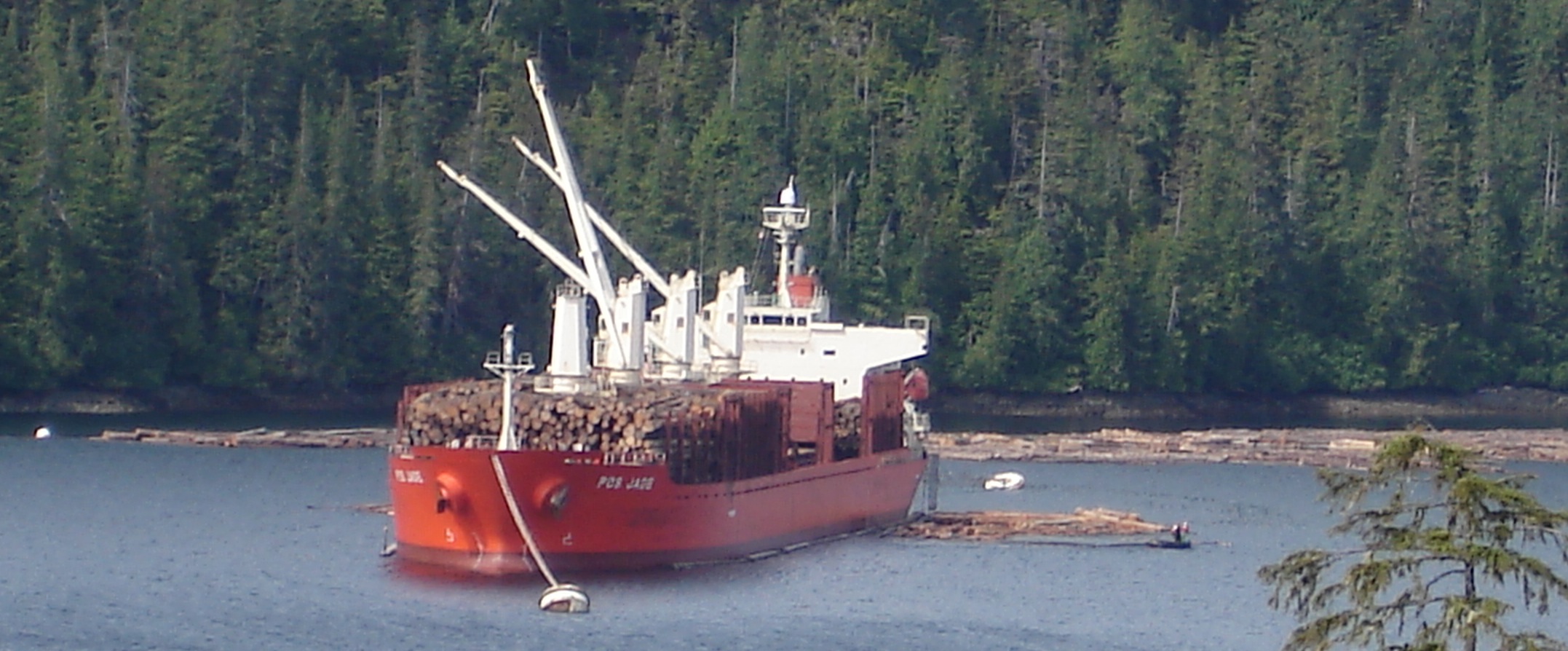
.. Quick Links ..
Testimony
Editorials
Petitions
Sealaska Exposed
More Pictures
Maps
.. Our Towns ..
Edna Bay
Port Protection
Point Baker
Cape Pole
Naukati
Hollis
Kupreanof
Whale Pass
Thorne Bay
Pirates of Sea Alaska

What You Can Do to Stop The Pirates of Sea Alaska
The Energy Committee will vote on June 18th on whether to send the Sealaska Bills to the floor.
So it is very important for you to now E-mail and call your Senator today and especially those on the Senate Energy Committee which now has S. 14 and S. 340, the Sealaska Bills.
Here is the contact information for the Senate Energy Committee.
First:
Tell the Senators in your state that they should vote against S. 14 and S. 340 when they get marked up in committee and if they get to the floor of the Senate.
Tell your senators you are opposed to the omnibus method of passing legislation as a matter of principal. Tell them it is offensive to you that 18 bills would be bundled into an hour and a half hearing.
Second:
Here are some talking points.
- These bills are unnecessary. Sealaska is responsible for their not getting their land when they told BLM to not transfer title they designated in in 2008.
- There are four bad precedents S. 340 and S 1306 will set if passed.
- Preempts State Law that allows Alaska to manage fish and wildlife on private land. These bills set a precedent that requires the Federal Government to manage wildlife on Sealaska's private land.
- Reopens the 37 year old deadline from 1976 when all claims for "cultural" sites had to be filed.
- Dozens of new sites will be selected at the mouths of valuable salmon creeks effectively blocking public access up stream.
- The locations are not specified.
- Dozens will be designated in this bill and thousands more in future years.
- Goes outside the Congressionally set boundaries around Native towns agreed to in 1976 to around our towns. Thousands of other selections outside boundaries could piggy back on this precedent.
- Establishes new economic sites never allowed in ANCSA in 1971 that would block public access to major tourism resources. This precedent could be extended all over the state.
- Makes the public pay for road maintenance on hundreds of miles of roads that will be used almost exclusively on islands where Sealaska is the sole land owner.
- Will shut down all logging on the Tongass National Forest by cutting redwood sized old growth trees that protect four species that could be listed as Endangered Species.
- Threatens hundreds of existing jobs and established businesses throughout the Tongass National Forest while maintaing 45 logging jobs for mostly out of state workers--until the timber runs out again in 6-7 years.
- Is about the profit of one corporation which can take their land at any time by releasing the hold they put on BLM transfer.
Don't delay. Do it today.
Here are some letters our allies have written:
Territorial Sportsmen - [Mar 21, 2013]
Safari Club International - [Feb 3, 2013]
Alaska Guide Association - [Feb 1, 2013]
Richter (Edna Bay Community) to BLM - [Jan 10, 2013]
You can ask your elected officials to take these steps.
Congress should not reward a corporation which misrepresents or misreports phony numbers to it or an agency like the US Forest Service, especially one like Sealaska which has been claiming for years that it needs new and better lands, because next year it is going run out of timber. By our calculation, Sealaska still has 70 square miles of timberland left.
Sealaska has failed to move new legislation through the last three sessions of Congress over a six year period.
During the same time period, Sealaska asked BLM to finalize land whose location it designated in 1975.
For these reasons:
- Congress should refuse to consider new legislation to convey more land than was authorized under ANCSA over 40 years ago.
- Congress should not alter the location for selection of lands which total between 98 and 133 square miles of timberland. Sealaska should take the lands from the areas it designated in its 2008 letter to BLM, commonly called "in the box."
- S. 340 and S. 14 should not pass the Energy Committee.
- BLM should now act on its own to finalize the 2008 Sealaska request. A request was submitted two and a half years ago asking BLM to act. Add your voice to this petition.
- If BLM will not act on its own, Congress should require that the BLM finalize the 2008 request Sealaska made.
- Congress should reform ANCSA to require the Security and Exchange Act apply to all Alaska Regional Native Corporations.
S. 340 and S. 14 Are Inequitable and Damaging
The 2013 bills will take 9,223 Volume Class 7 acres, or 14.4 square miles. And it will take 11,458 acres of Volume Class 6, or 18 square miles.
This old growth is vital for keeping the Wolf and Goshawk unlisted. These Volume Classes are very rare, comprising less than single digit percentages of the productive forest.
Numbers from Outer Space
We stumbled across some numbers that are so out of whack and inconsistent with reality that we wonder if Sealaska got them delivered on a meteor.
55,927 Acres Cut
The numbers we found show how many acres Sealaska cut by May 25, 2011 (Congressional testimony of Byron Mallott) and how many acres were cut before 2007 (2008 USFS TLMP EIS, Appendix E data through 2006).
Byron Mallott told Congress Sealaska had cut 189,000 acres by mid 2011.
Appendix E shows 133,073 acres Sealaska cut from its inception through 2006.
Subtracting the 2011 from the 2006 data gave us the number of acres Sealaska cut in 5.5 years.
Sealaska cut 55,927 acres between 2006-2011 we calculated.

Sealaska wastes wood by burning logs that are too long for the ship and by leaving massive volumes to rot in the woods.
Volume of Timber Havested
384,700,000 board feet
Sealaska also reported to the USFS the volume of timber it cut for 2006-11.
The volume between 2006-11 was 384,700,000 board feet.
The cut therefore averages 6,878 board feet per acre.
Consulting with industry experts, we found that number ridiculously low.
Heck, one big tree can contain 10,000 board feet of timber.
The USFS considers 8,000 board feet per acre to be the lower end of commercial timber, and even that is not economical to log on the TNF.
We do know the average volume per acre is 25,000 board feet on the TNF.
But some foresters estimate Sealaska's average is far higher; their legislation sought new lands around 50,000 board feet per acre.
So the average volume per acre over five years was reported by Sealaska to the USFS at about 3.6 times lower than average timber lands now sold.
Put another way, if it takes 3,570 acres on land averaging 25,000 board feet to make 100 million board feet (allowing for scrub acres), Sealaska's 55,927 acres should have produced almost 1.4 billion board feet.
The gap between the number Sealaska reported to the USFS 384.7 Million and 1.4 Billion average yields is so out of whack it might as well have been pulled from a hat.
Lacking any more inside information revealed by Sealaska, here are some speculative inferences that can be drawn from our findings:
- Sealaska kept lousy records.
- Sealaska executives engaged in massive fraud misreporting the volume shipped, paying scalers to underestimate results, and paying ship's captains to misreport the results with large kick backs occurring from their buyers.
- Sealaska squandered profits on luxurious hotel and air flights on trips of marginal benefit to shareholders.
- Sealaska hired too many relatives and paid them too much.
- Before Congress, Byron Mallott, the Sealaska Board Member, misrepresented to Congress how much timber Sealaska cut in a scheme to pass legislation favorable to the corporation. In this misrepresentation, he may have had to have been guided.
- Sealaska paid way too much in benefits to retirees.
- Sealaska wasted thousands of tons of wood by burning usable pieces that do not fit in the ships and this wastage was not reported.
- Sealaska wasted millions of tons of wood by taking only the spruce, cedar, and biggest hemlock trees leaving large percentages to rot in the woods and the rotting waste was not reported to the USFS.
- Sealaska gave the USFS inaccurate data on how many acres it cut or the volume it shipped.
Whatever the reasons for the discrepancies, Sealaska now owes Congress, the US Forest Service, its shareholders, and the public an explanation. Why don't the numbers Byron Mallott gave Congress and the numbers Sealaska gave the US Forest Service result in a believable volume per acre?
The human spirit is weak when great sums of money are exchanged. What distinguishes our economy from others is its accountability. It is time this accountability be applied to all ANCSA corporations. It is long past time BLM finalize Sealaska's 2008 request.
Please make these points to your representatives in Congress, to your local organizations, and to every reporter you know.
Piracy only occurs on waters where no one can be held accountable.
We hope that our position will be a rallying point around which not only our towns and allies can rally, but Alaska Native shareholders as well.
SEC Rules Do Not Apply to Sealaska
Jack Sparrow would be happy to drop anchor in Sea Alaska. For the law blows lightly on its accounts.
Let us explain...
A Government Accountability Office study out at the start of 2013 examined laws that apply to ANCSAs, including Sealaska Corporation's book keeping.
GAO's overall conclusion was Sealaska and other ANC's escape most oversight and regulation of their books under Federal Law.
GAO found:
- Sealaska is "exempt" from the Security and Exchange Act of 1934 which requires audited certified financial reports with forward looking statements.
- Sealaska is exempt from showing its shareholders a detailed look at its books; and, lawsuits for its shareholders are not authorized.
- Therefore, shareholders' eyes are blinded to what its managers and Board see and "access to meaningful corporate information is lacking."
- The Federal Government is not authorized under ANCSA (1971) to monitor the accuracy or veracity of Sealaska's annual report, a report that SEC found differed from what they expect to see in annual reports prepared under the SEC Act.
- The accounting principles used to prepare the annual reports of ANCSA's are questioned by SEC staff members.
- So the accuracy of the annual report Sealaska does prepare is of dubious quality unless shareholders can see the underlying records.

Who counts how much Sealaska volume is loaded for export to Asia?
Say Jack Sparrow wanted to load some Sealaska trees on board:
- Would shareholders be able to find out who monitored the amount loaded?
- NO
- Would shareholders be able to see the records of monitoring how much was removed from the forest?
- NO
- Would shareholders be able to see the ship's manifest specifying how much was loaded and how much was delivered?
- NO
- Would shareholders be able to see the bank deposits from firms in Korea, China, or Japan where Jack delivered the goods?
- NO
- Could shareholders examine the expense sheets of Sealaska?
- NO
- Could Shareholders then reach an informed judgement if the hundreds of thousands that are spent on Corporate Officers' salaries and benefits are justified by the performance of Sealaska?
- Heck NO
In other words, Sealaska is a corporation that is unaccountable to its shareholders, and the corporations that share revenue with Sealaska, or regulators who rely on it to produce meaningful and truthful numbers.
When inconsistencies are uncovered --- and we have discovered a whopper which we will soon discuss --- the lack of verifiable numbers for shareholders' review allows them to draw all sorts of inferences and conclusions which may or may not be accurate, fostering suspicions and mistrust.
Neither the Board nor the Corporate Officers need to reveal the numbers under existing law to allay shareholder concerns even though these shareholders are the kin of the board of directors.
PLEASE CONTRIBUTE TODAY
FIGHTING COSTS ALOT. WE NEED YOUR HELP TODAY.